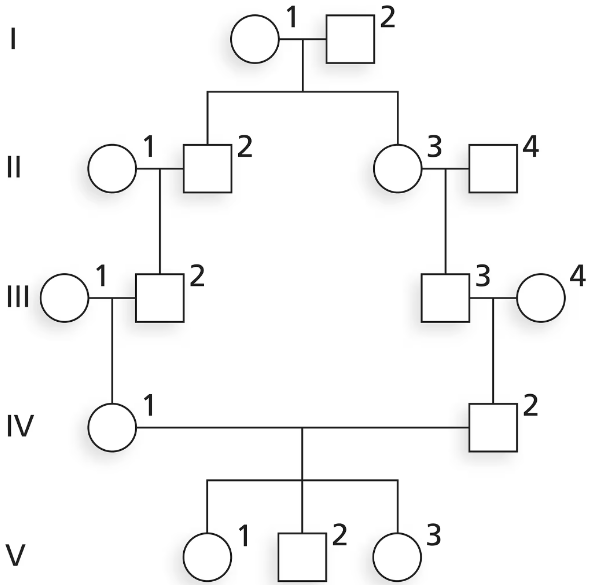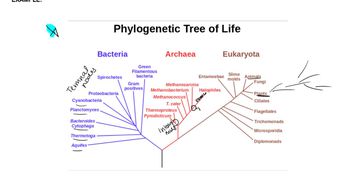A number of comparisons of nucleotide sequences among hominids and rodents indicate that inbreeding may have occurred more often in hominid than in rodent ancestry. Bakewell et al. (2007. Proc. Nat. Acad. Sci. [USA] 104: 7489-7494) suggest that an ancient population bottleneck that left approximately 10,000 humans might have caused early humans to have a greater chance of genetic disease. Why would a population bottleneck influence the frequency of genetic disease?
Table of contents
- 1. Introduction to Genetics51m
- 2. Mendel's Laws of Inheritance3h 37m
- 3. Extensions to Mendelian Inheritance2h 41m
- 4. Genetic Mapping and Linkage2h 28m
- 5. Genetics of Bacteria and Viruses1h 21m
- 6. Chromosomal Variation1h 48m
- 7. DNA and Chromosome Structure56m
- 8. DNA Replication1h 10m
- 9. Mitosis and Meiosis1h 34m
- 10. Transcription1h 0m
- 11. Translation58m
- 12. Gene Regulation in Prokaryotes1h 19m
- 13. Gene Regulation in Eukaryotes44m
- 14. Genetic Control of Development44m
- 15. Genomes and Genomics1h 50m
- 16. Transposable Elements47m
- 17. Mutation, Repair, and Recombination1h 6m
- 18. Molecular Genetic Tools19m
- 19. Cancer Genetics29m
- 20. Quantitative Genetics1h 26m
- 21. Population Genetics50m
- 22. Evolutionary Genetics29m
21. Population Genetics
Allelic Frequency Changes
Problem 34b
Textbook Question
Evaluate the following pedigree, and answer the questions below. Who is/are the common ancestor(s) of the inbred individual(s)?

 Verified step by step guidance
Verified step by step guidance1
Examine the pedigree chart to identify the inbred individual(s). Inbreeding occurs when an individual has parents who are related by descent, meaning they share a common ancestor.
Trace the lineage of the inbred individual(s) to locate the parents. Observe if the parents are related and share a common ancestor.
Identify the common ancestor(s) by following the lines connecting the parents of the inbred individual(s) to their ancestors. Look for individuals who appear in both parental lineages.
Verify the relationship by ensuring that the identified common ancestor(s) contribute genetic material to both parents of the inbred individual(s). This confirms the shared ancestry.
Summarize the findings by listing the common ancestor(s) and explaining their role in the inbreeding observed in the pedigree chart.
 Verified video answer for a similar problem:
Verified video answer for a similar problem:This video solution was recommended by our tutors as helpful for the problem above
Video duration:
1mPlay a video:
Was this helpful?
Key Concepts
Here are the essential concepts you must grasp in order to answer the question correctly.
Pedigree Analysis
Pedigree analysis is a method used in genetics to trace the inheritance of traits through generations within a family. It involves creating a diagram that represents family relationships and the transmission of genetic conditions. By analyzing the pedigree, one can identify patterns of inheritance, such as autosomal dominant or recessive traits, and determine the likelihood of traits appearing in future generations.
Recommended video:
Guided course

Pedigree Flowchart
Inbreeding
Inbreeding refers to the mating of individuals who are closely related genetically, which can increase the probability of offspring inheriting genetic disorders. In a pedigree, inbred individuals often share common ancestors, which can be identified by tracing their lineage. Understanding inbreeding is crucial for evaluating genetic risks and the potential for expressing recessive traits in offspring.
Recommended video:
Guided course

Non-Random Mating
Common Ancestors
Common ancestors are individuals from whom two or more individuals are directly descended. In the context of a pedigree, identifying common ancestors helps to understand the genetic relationships and potential shared traits among family members. This concept is essential for evaluating inbreeding and assessing the genetic health of a population, as it highlights the genetic connections that may influence trait inheritance.
Recommended video:
Guided course

Phylogenetic Trees
Related Videos
Related Practice
Textbook Question
350
views


